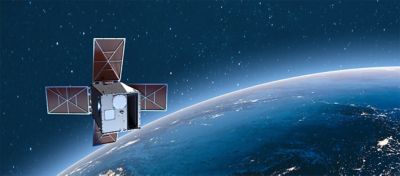Case Study
-
United States -
United Kingdom -
India -
France -
Deutschland -
Italia -
日本 -
대한민국 -
中国 -
台灣
-
Ansys is committed to setting today's students up for success, by providing free simulation engineering software to students.
-
Ansys is committed to setting today's students up for success, by providing free simulation engineering software to students.
-
Ansys is committed to setting today's students up for success, by providing free simulation engineering software to students.
-
Contact Us -
Careers -
Students and Academic -
For United States and Canada
+1 844.462.6797
“From the inception of Anywaves in 2017 to the present day, Ansys has consistently delivered the appropriate solutions that help us meet the technological challenges inherent in the development of our space antennas. Today, Ansys is a trusted growth partner — a relationship we expect to continue in view of future challenges. Thanks to Ansys' regularly updated simulation software, we can stay at the forefront of technology in antenna design.”
— Nicolas Capet, Ph.D., CEO, Anywaves
Anywaves designs, manufactures and delivers commercial off-the-shelf (COTS) or custom antennas worldwide. Building on its expertise in the field and recent commercial success, Anywaves uses simulation to expand its solutions portfolio and address all types of spacecraft.
Challenges
High-frequency space antenna design presents numerous engineering challenges and constraints imposed by the extreme conditions space vehicles are subject to in orbit. Whatever the mission, be it telecommunications, global positioning/navigation, or Earth Observation, space antennas must consistently perform essential functions throughout a space vehicle's lifetime. A single malfunction can severely compromise satellite performance or lead to shutdown.
Space antennas must withstand significant thermal and atmospheric variations, as well as intense mechanical bearings such as vibrations and shocks. Their miniature size, plus the design and certification process required to bring them to market, can complicate production. All these factors can negatively impact development times and costs. Therefore, they must be accounted for as early as possible. To do so, the Anywaves team needed a solution to model and simulate their complete antenna designs to reduce the number of time-consuming and costly physical testing phases.

PROBA V-CC (PVCC) satellite image courtesy of Aerospace Lab.

Nicolas Capet, Ph.D., CEO of Anywaves.
Engineering Solutions
To remain agile enough to meet the increasingly complex technical demands of Anywaves’ growing portfolio requires continuously updated versions of the most advanced simulation tools and solvers available. Since its inception, Anywaves has been using Ansys multiphysics solutions to help deploy its antenna technology, including:
- Ansys Mechanical throughout the design phase to model the mechanical structure of antenna components. Mechanical can analyze component behavior in terms of deformation, vibration, resistance, and lifespan. The software is also used to test dynamic thermal and acoustic effects, as well as the topological parameters of the antenna in its real-world environment.
- Ansys HFSS electromagnetic (EM) simulation software to study the electronic operation of the entire antenna. Merging meshes of different scales within HFSS enables engineers to combine all components, from the antenna’s electronic circuits to the satellite envelope.
- Ansys Workbench platform for connecting Mechanical and HFSS to perform multiphysics simulations on a new range of products.
Benefits
- Virtual testing with Mechanical and HFSS via Workbench enables Anywaves to test many design variants that meet space standards, from the digital model to the final antenna prototype on the satellite.
- The team can explore antenna behavior in consideration of numerous concepts and hypothetical scenarios during analysis to reduce errors and improve designs.
- Continuous access to new versions of Ansys software optimizes simulation speed for faster analysis of both the platform and surrounding elements of these increasingly complex devices.
- A variety of available tools and solvers ensures engineers can conduct the appropriate analyses within more efficient, cost-effective time frames and shorten the path to market in the industrialization of their designs.
- Combining these solutions also facilitates testing in new environments for a new range of products, including antennas for reusable launchers where an understanding of launch impact — both thermally and vibrationally — is important.
Let’s Get Started
If you're facing engineering challenges, our team is here to assist. With a wealth of experience and a commitment to innovation, we invite you to reach out to us. Let's collaborate to turn your engineering obstacles into opportunities for growth and success. Contact us today to start the conversation.











